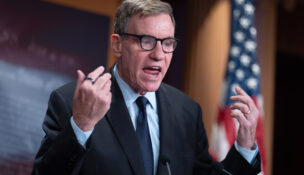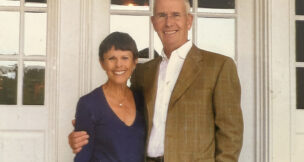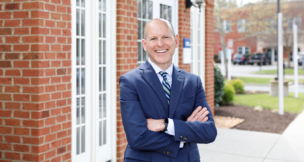Rising in the Southwest
Region gains political power, attention
Beth JoJack //March 30, 2022//
Through decades of owning her own beauty salon and later a gift shop in downtown Abingdon, Cathy Lowe developed an interest in economic development.
In 2006, she decided to run for town council and won — ultimately serving for 12 years, including six as vice mayor and two as mayor.
Throughout her career, Lowe, who sold her shops around 2009 and now leads the Virginia Highlands Small Business Incubator, has kept a close watch on the goings-on in Richmond. Like many in her region, she sometimes feels that Southwest Virginia gets ignored by lawmakers in the state’s capital.
“Those of us that live here used to joke that we need to educate folks that Virginia doesn’t end at Roanoke,” Lowe says.
“Sometimes, I’ve even said the state seems to stop at Charlottesville,” agrees new House Majority Leader Terry Kilgore, R-Gate City, who has represented the state’s southernmost corner in the House of Delegates since 1994.
Case in point: Last year, a panel of retired judges selected eight citizens to join eight Democratic and Republican legislators to make up the Virginia Redistricting Commission, which was charged with the chore of drawing new state and congressional maps.
After the representative from Bristol resigned, commission members were tasked with choosing his replacement. They elected to pick between two candidates: one from Rockingham County and another from Bedford County — each hours away from far Southwest Virginia.
“I do think these two people are as close as we kind of get to Southwest, which is important,” state Sen. Stephen Newman, R-Lynchburg, said at the time, according to WVTF/Radio IQ. “Those people in Southwest deserve a kind of a vote.”
At any rate, the commission promptly combusted; its members called it quits in October 2021 after failing to agree on new boundaries. The process then went to the Virginia Supreme Court, where justices appointed two special masters to draw new legislative maps, which were approved by the court in December 2021.
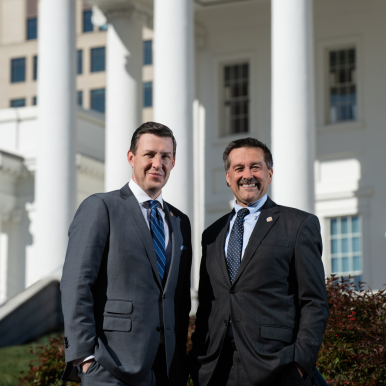
The maps are based on 2020 U.S. Census data that showed Southwest Virginia suffered the largest population decline in the state — a loss of more than 8%.
Due to its shrinking population, the region lost a House of Delegates seat during redistricting. Moving forward, it will be represented by four delegates instead of five.
The new maps place Del. Will Wampler, R-Abingdon, who was first elected to the General Assembly in 2019, in the same district as Del. Israel O’Quinn, R-Bristol, who has served in the General Assembly since 2011 and was recently appointed deputy majority leader. (Wampler did not respond to a request for comment for this story.)
Lowe had expected Southwest Virginia would lose a delegate in redistricting, but she’s still unhappy that scenario came to fruition.
“If you look at the map of [Southwest Virginia], it’s a large landmass,” she says. “That puts a lot of geography in the hands of only [a few] people. That’s a huge amount of work.”
Richmond heavyweight?
Even as Southwest Virginia is losing a delegate in redistricting, some pundits argue the region is poised to enjoy increased influence in the capital as a reward for being reliably red now that Republicans have regained control of state government, except for a narrow minority Democrats still hold in the state Senate.
Virginia’s Democratic base turned out in November 2021, but it couldn’t compete with the GOP turnout for Gov. Glenn Youngkin.
“They were bigger,” says Mark Rozell, dean of George Mason University’s Schar School of Policy and Government, “and a very big part of that came from the rural areas of the state, which surprised many analysts because for years people have been pointing to the shifting of political power to Northern Virginia.”
In Lee County, Youngkin took home a whopping 87.6% of the vote — an example of how well the first-time politician performed all across Southwest Virginia.
“Youngkin was at over 80% of the vote in a lot of those towns,” points out J. Miles Coleman, spokesman for the University of Virginia’s Center for Politics.
In the 2021 election, Russell County saw the state’s largest increase — 40.9% — in voter turnout since the 2017 election, according to the Virginia Public Access Project.
“The governor has a kind of debt of obligation to those constituencies that put him where he is,” Rozell says. “And anybody can look at the data and see the phenomenal — unprecedented, really — turnout in rural Virginia for Youngkin.”
Lowe maintains the new governor, who had never previously served in elected office, has already began paying back that political debt. “I don’t think it’s gone unnoticed,” she says.
Youngkin tapped Amanda Pillion, an Abingdon town council member and wife of state Sen. Todd Pillion, R-Washington County, as one of 12 members of his transition team. He also selected several Southwest Virginians to serve “on landing teams” to prepare Youngkin for his first days in office.
Speaking at the annual Rural Caucus Reception in February, about two weeks into his term, Youngkin acknowledged, “I’ve made two trips to Southwest Virginia [as governor]. Why? Because it’s important for rural Virginia to know that their governor is delivering on what government needs to do — to help.”
The movers and shakers of Southwest Virginia are often quick to mention Youngkin’s business acumen. He retired in 2020 as co-CEO of Washington, D.C.-based private equity firm The Carlyle Group with an estimated personal worth of about $250 million. The governor’s Democratic critics, however, have questioned Youngkin’s commitment to workforce development and aiding the poor, noting news reports that under Youngkin’s leadership, Carlyle offshored at least 1,300 American jobs and raised rent for seniors at a large mobile home park Carlyle owned in California.
“He’s somebody who understands business,” Kilgore says. “And I think that, really, he can help us a lot in Southwest Virginia, whether that’s with new jobs or data centers locating [here or] … new energy infrastructure like solar or modular nuclear opportunities in the future.”
Youngkin’s positivity toward the Southwest sets a tone for state government, says Will Payne, managing partner of Coalfield Strategies LLC, an economic development consulting firm, and director of InvestSWVA, a public-private business attraction and marketing campaign for the region. “I already feel just this change … in the way that we are perceived and a willingness to listen.”
In late February, Payne met with Caren Merrick, Virginia’s secretary of commerce and trade. He brought her two types of beer made with barley grown in Southwest Virginia and produced through Appalachian Grains, a specialty grain broker that connects local growers with breweries and distilleries across the state.
“I can hardly wait to chill it and try it,” says Merrick, who selected Southwest Virginia as the first region she’ll visit as secretary for a listening tour this spring. “We’ll be doing roundtables and listening to business leaders.”
Even one of Southwest Virginia’s prominent Democrats seems open to seeing whether Youngkin can deliver for the region. A community activist from Big Stone Gap, Taysha DeVaughan hopes to be tapped as the Democratic challenger for U.S. Rep. Morgan Griffith’s seat in November.
DeVaughan says she was disappointed by Youngkin’s executive order to stop school masking mandates, noting that fewer people in her area are fully vaccinated against COVID-19. “In Southwest Virginia, we deal with people who have a lot of different illnesses, especially respiratory illnesses and black lung.”
That said, she approves of the governor’s quest to cut grocery taxes. “Especially in a time of COVID, where people aren’t employed like they used to be … just being able to pay for groceries is a big deal,” she says.
Influential lawmakers
After Republicans took back control of the Virginia House of Delegates, the Virginia GOP caucus tapped Kilgore as majority leader and he appointed O’Quinn as deputy majority leader.
“That’s not symbolic leadership,” Kilgore says. “We’re in meetings with the governor every other day or two, and we’re in the room when legislation is happening.”
Southwest legislators also won committee leadership roles. Del. Will Morefield, R-Tazewell, now serves as vice chair of the Counties, Cities and Towns Committee, while Kilgore is vice chair of the Commerce and Energy Committee, and O’Quinn is vice chair of the Privileges and Elections Committee.
In more purple areas of Virginia, delegate seats are more prone to turn over, Coleman points out, depending on the mood of the electorate. With Southwest Virginia being reliably red, lawmakers have an easier time building seniority. “They’re fairly comfortable in their districts,” Coleman says.
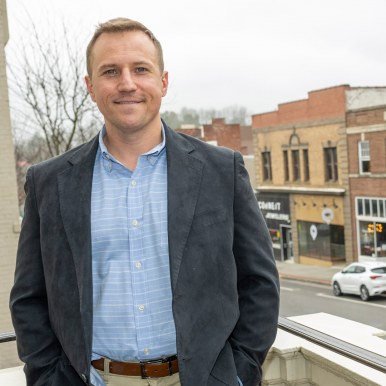
Economic challenges
In 1990, Virginia had 10,265 people working in the coal industry. By 2021, that number had dropped to 1,891. Naturally, coal’s decline has greatly impacted the area of Southwest Virginia known as the Coalfields, which encompasses Buchanan, Dickenson and Wise counties and portions of Lee, Russell, Scott and Tazewell counties.
Lack of employment opportunities led to the region’s dramatic population drop.
“What you see is a tremendous amount of out migration, particularly young adults,
because they don’t see job prospects in the area,” says Hamilton Lombard, a demographer for the Weldon Cooper Center for Public Service at the University of Virginia.
Even before the pandemic, Southwest Virginia struggled with its labor force participation. About 31% of adults, or more than 100,000 people, in Southwest Virginia weren’t working in 2019, according to the Virginia Tech Center for Economic and Community Engagement (CECE). Approximately 10% of all adults not working in Virginia that year lived in the region.
“So, the challenge is, honestly, you have a lot of discouraged workers,” says Sarah Lyon-Hill, associate director for research development at the CECE. “You have a significant portion probably who are already kind of dependent on prescription medication, [who] probably [have even] kind of fallen into greater depressions and are even more dependent, which again prohibits them from working.”
And with many of the region’s young people fleeing to cities to find better paying jobs, she says, the region’s workforce also skews older, adding to the lower labor participation.
There does appear to be some economic recovery, marked by last year’s announcement that Blue Star NBR LLC would be investing $714 million to build a nitrile rubber and medical glove manufacturing facility in Wythe County, a project expected to create nearly 2,500 jobs over five years.
But even with that major victory, Lombard isn’t optimistic about the region’s ability to grow its population again, calling the situation “fairly grim.”
Recently, the Mount Rogers Regional Partnership (the economic development nonprofit formerly known as Virginia’s Industrial Advancement Alliance) has decided to pivot, making its chief focus talent development as a way of retaining more natives and to woo more outsiders to the area.
“How can we work with the secretary of commerce and trade office and the governor’s office and the legislators to develop programs that will allow us to grow in population?” asks Josh Lewis, the partnership’s executive director. “How do we get back to positive population growth and get more younger professionals locating here so that they can put down roots and grow and have families?”
One of the hurdles keeping some parents from working in the western part of the state is the availability and expense of child care, says Travis Staton, president and CEO of United Way of Southwest Virginia.
“We’re very close to about a 30% gap in child care availability, where other parts of the state only have about a 12% gap [in available child care vs. the need for child care],” Staton says.
Majority Speaker Kilgore and state Sen. Pillion proposed budget amendments asking that $14.2 million from federal American Rescue Plan Act resources be directed to the United Way of Southwest Virginia to support its Ready SWVA initiative, which would create five child care facilities in the region, while also strengthening the current network of providers.
The state budget plan released by the House in late February did not include the funding. The Senate’s budget plan included $3.5 million for the initiative. “We shall soon see how they reconcile,” Scott Robertson, director of marketing and communications for the United Way of Southwest Virginia, wrote in a March 8 email.
Jonathan Belcher, executive director and general counsel of the Virginia Coalfield Economic Development Authority, would also like to see Richmond’s lawmakers work on solving Southwest Virginia’s infrastructure problems.
In one of his last official acts, former Gov. Ralph Northam announced plans to put $207 million into completing the U.S. 460/121 Poplar Creek “Phase B” project in Buchanan County, part of the so-called Coalfields Expressway, which was proposed decades ago. (See related story.)
More money needs to be invested, Belcher says. “There’s certain parts of that region that we cover that, until there’s a much better highway connecting to the interstate, it’s always going to be a real big challenge to attract larger projects.”
EDITOR’S NOTE: This story has been corrected since its original publication. State Del. Israel O’Quinn is the deputy majority leader. He was incorrectly identified as deputy majority whip, his former position, in an earlier version of the story.
T


